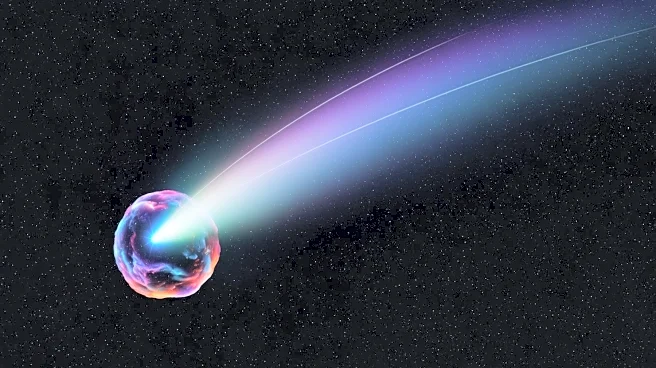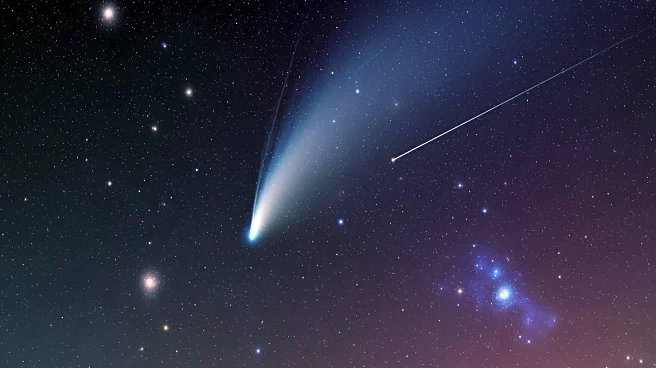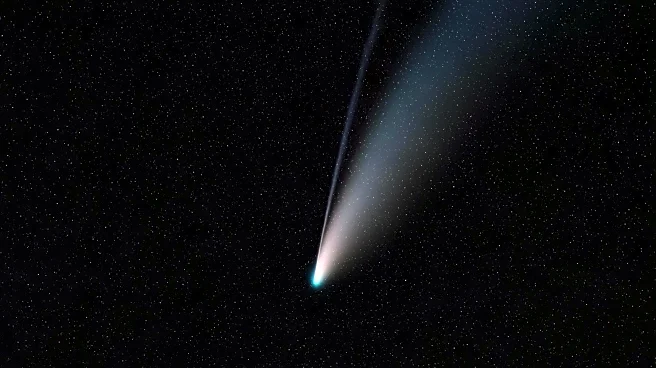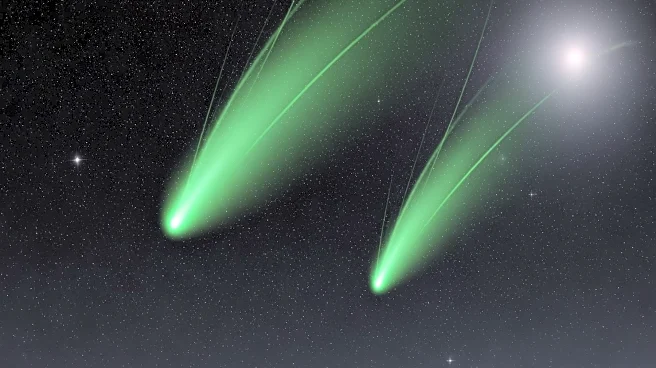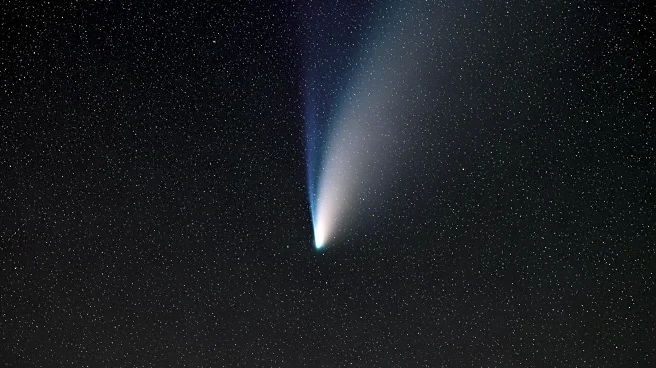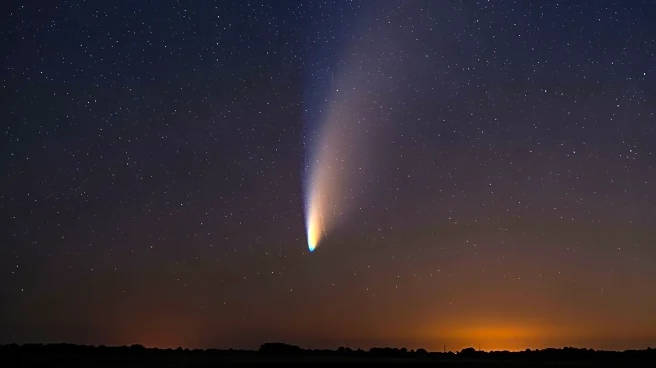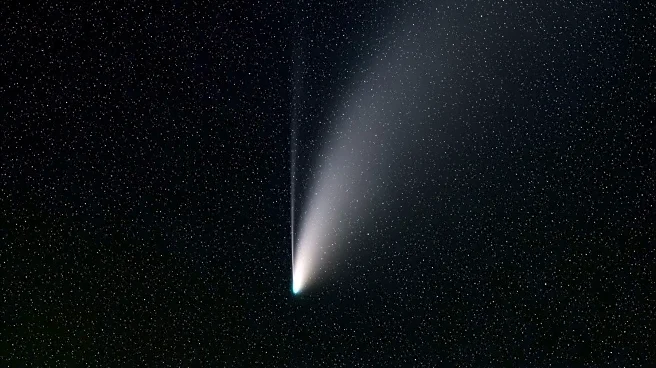What's Happening?
Comet C/2025 A6 (Lemmon), discovered on January 3, 2025, by the Mount Lemmon Survey, is currently visible in both morning and evening skies. The comet is transitioning from the constellation Canes Venatici to Boötes, with its closest approach to Earth,
or perigee, occurring on October 21, 2025. At this time, it will be 28.6 million miles away, coinciding with the New Moon, which is expected to be its brightest period. Observers are advised to view the comet 90 minutes after sunset facing northwest or before sunrise facing northeast, using binoculars or telescopes for optimal viewing.
Why It's Important?
The visibility of Comet Lemmon presents a unique opportunity for astronomers and enthusiasts to observe a celestial event that will not recur until approximately the year 3175. The comet's approach offers insights into its composition and behavior, contributing to scientific understanding of such celestial bodies. The event also serves as a reminder of the dynamic nature of our solar system and the gravitational influences that alter the paths of comets. This occurrence may inspire public interest in astronomy and encourage educational activities related to space observation.
What's Next?
As Comet Lemmon reaches its perigee on October 21, observers are encouraged to take advantage of the viewing conditions before the comet begins to fade. The Moon will reenter the evening sky after this date, potentially affecting visibility. Scientists may continue to monitor the comet's trajectory and behavior, providing further data for future research. Public interest may lead to increased participation in astronomy clubs and educational programs focused on space exploration.
Beyond the Headlines
The appearance of Comet Lemmon highlights the importance of ongoing astronomical surveys and the role of observatories like the Mount Lemmon Survey in discovering and tracking celestial objects. This event underscores the collaborative efforts in the scientific community to study and understand the universe, fostering international cooperation and knowledge sharing. Additionally, it may prompt discussions on the potential impacts of celestial events on Earth and the importance of preparedness for any unforeseen occurrences.
